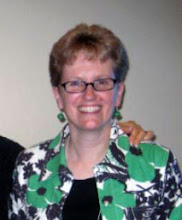
I have written and re-written this about twenty times—thank goodness for computers. Money is a huge issue. I finally decided on a list of things I think are true. I would love to hear any additions anyone has.
My ideas about money:
• Everybody wants more!
• Money can be used as a tool to create improvements and innovations or as a barrier to prevent them. When folks want to innovate first they explore the issues and decide on the thing that is worth doing—then they seek resources. Often the first indication that someone wants to block an idea or that they have a competing agenda is that they insert the money questions into the “what’s worth doing” discussions.
• Sometimes it appears that the struggle for the disability community is that we lack money because we lack influence and we lack influence because we lack money. While the multi-million (probably multi-billion, but I don’t want to stop to look it up!) dollar disability industry employs and sustains people all around the country, this money is spent on meeting care needs, it does not build credibility, respect and influence beyond the disability community (just the way having enough money to pay your bills at home gets you through the day, but doesn’t help you build for your future.)
• Much of the non-profit community, in an attempt to build credibility with their big-business counterparts has worked to be very accountable and bottom-line driven. We must be accountable of course, but this should not mean turning our backs on the quixotic, relational, expansive ideals that are the essential mission and natural skill set of most agency founders and leaders. Not only does this dampen everyone’s spirits, but our big-business counterparts USE those very tactics everyday for fun and profit—they call them entrepreneurialism, innovation, sales and marketing.
• Pity campaigns. They have their place. If you are running a charity that provides food for malnourished children in a third world country, I think tragic commercials are fine. Pity campaigns bring in lots of money and malnutrition is a devastating, temporary condition. When that child graduates from Harvard no one in his adult life will know that that was he in the commercial 20 or 30 years ago, unless he tells them.
On the other hand I think it’s wrong for agency supporting people with disabilities in a community to paint a picture of lifelong neediness for people who use wheelchairs. You may well make lots of money in your campaign, while making it more difficult for people with wheelchairs in your community to get jobs and respect. You are richer, your constituents are not. This does keep your constituents from outgrowing the services you offer today, but that really shouldn’t be the meaning of “support.” Should it?
• The non-profit universe is set up so that everyone must compete for the same money. This prevents a lot of networking, partnering and coalition-building. I think this is a shame. Just as it is possible for me to invite you over for dinner without giving you my house, it must be possible for agencies and others to connect and interact in ways that increase the visibility, credibility and effectiveness of everyone.
• Every idea does not have to be brand new—combining ideas (like the new coffeemaker-toaster-egg cooker that my brother-in-law got for Christmas!) or piggy-backing off of others are good ways to add to your repertoire of activities without spending bundles necessarily. (I had this written when Katya Andresen posted that on her blog—serendipity!)
So, those are my thoughts. What are yours?















